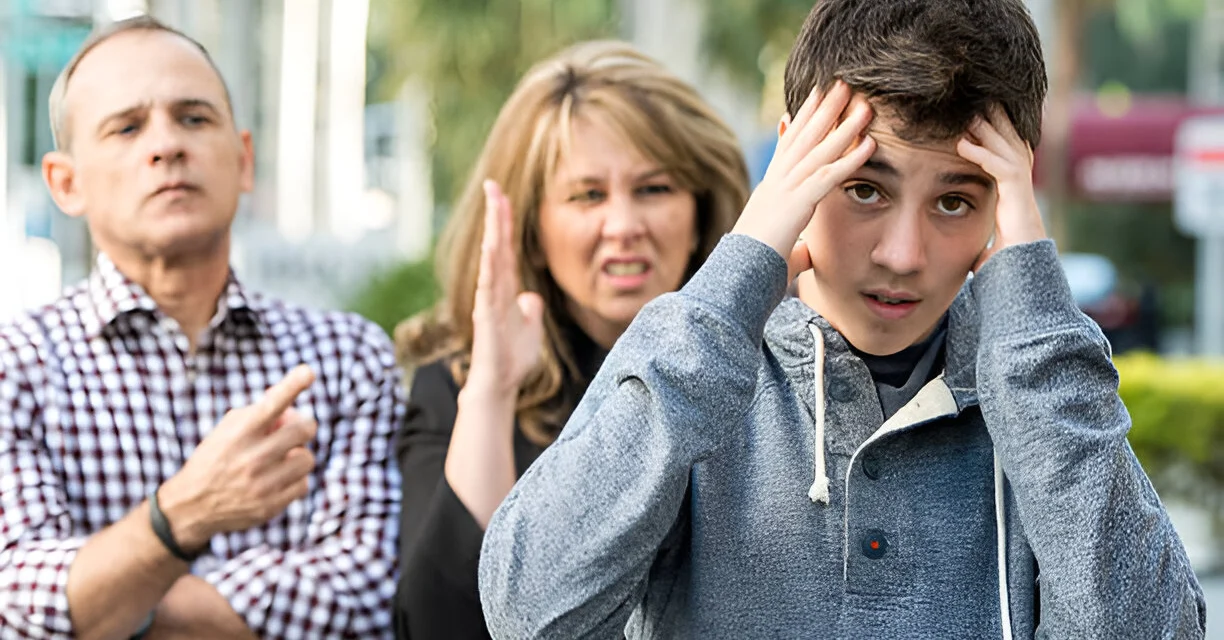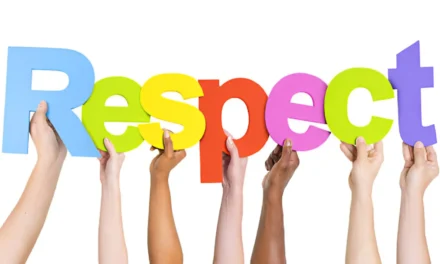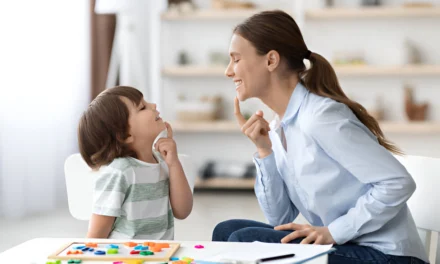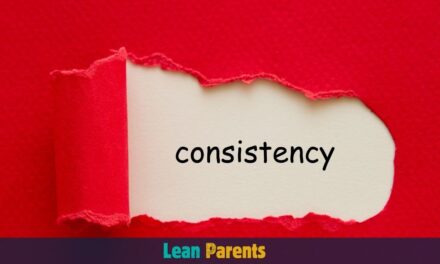As a parent, I face the tough task of disciplining my kids in public. Whether it’s a tantrum in the grocery store or an outburst at the park, it’s hard to stay calm and guide them. But don’t worry, I’ve found 8 strategies that help me handle these situations without embarrassment.
Effective discipline is about teaching and guiding, not just forcing obedience. It’s a mix of respect, consistency, and understanding their needs1. Kids aged 2 to 6 often struggle with frustration, language, and reasoning, leading to tantrums and bad behavior1. But with the right approach, we can help them grow into emotionally mature kids.
Key Takeaways
- Effective discipline is about teaching and guiding, not just forcing obedience.
- Respect, consistency, and understanding developmental needs are the foundations of effective discipline.
- Children between 2-6 years old can struggle with behaviors like tantrums, hitting, and biting.
- Proven strategies can help you navigate public disciplining without embarrassment.
- Discipline should focus on fostering emotional maturity and acceptable behaviors.
In this article, we’ll explore 8 proven strategies for disciplining your child in public. These methods will help you stay calm and guide your child towards better behavior. We’ll learn how to discipline without worrying about what others think. Let’s start this journey of shaping our children’s character while keeping our dignity.
Introduction
Discipline is key for a child’s growth, teaching them to handle the real world. Effective and positive discipline is about guiding, not forcing obedience, to educate children2. But, disciplining kids in public is tough, as parents must stay calm and avoid embarrassment.
Effective discipline is vital. When schools and families team up, positive results can happen3. It helps kids learn self-control, respect, and how to face life’s challenges.
Challenges of Disciplining in Public
It’s hard to discipline a child in public. Parents must handle the situation while keeping their cool and avoiding shame2. This is even tougher when a child is upset or has trauma, leading to bad behavior2.
How discipline is handled in public affects a child’s self-esteem and their bond with parents3. Parents should use empathy, patience, and teaching, not punishment.
Knowing the importance of discipline and the public challenges helps parents. They can learn to guide their kids positively3.
Understanding Effective Discipline
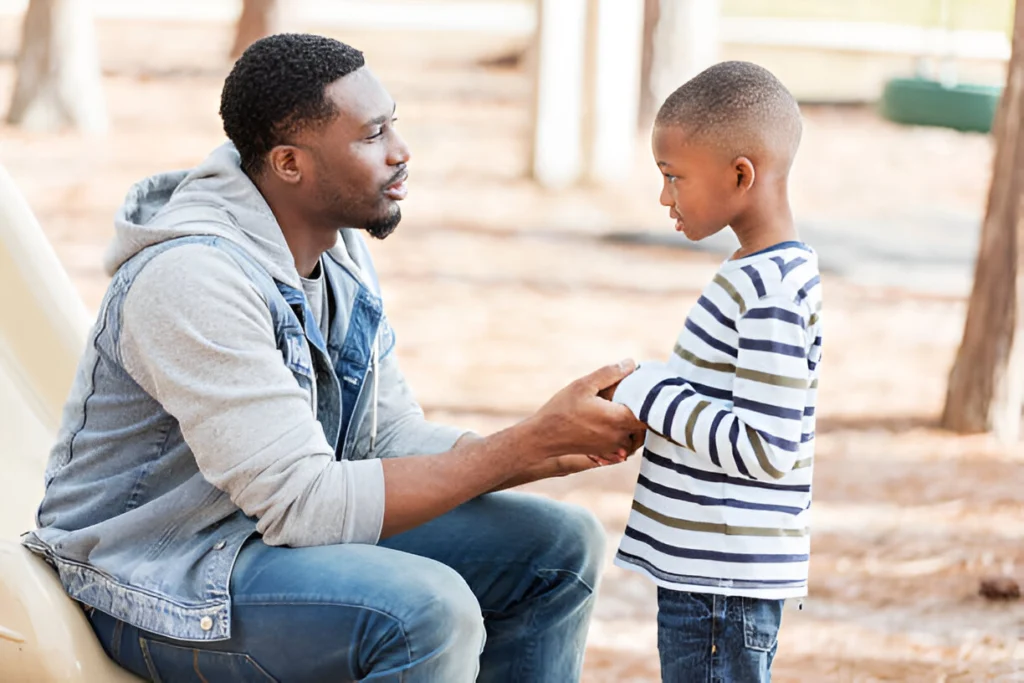
Effective discipline is key in parenting. It helps children behave well and grow into emotionally mature adults4. It teaches them to respect others, think about others’ needs, and control themselves4.
Goals of Effective Discipline
A disciplined person waits for pleasure, thinks of others, speaks up without being mean, and handles discomfort4. Parents aim to teach these skills to their kids. This helps them become responsible and well-adjusted.
Respect and Consistency in Discipline
Respect is the base of effective discipline. Children should respect their parents and others’ rights5. Being consistent in discipline is also key. Inconsistency confuses kids and weakens discipline5.
Discipline should be firm, fair, reasonable, and consistent. This builds trust and respect between parents and children5.
| Discipline Techniques by Age | Description |
|---|---|
| Infants (birth to 12 months) | Infants should not be disciplined using techniques like time-out, spanking, or consequences5. |
| Early Toddlers (1 to 2 years) | Require parental tolerance and disciplinary interventions to ensure safety and prevent destructive behavior5. |
| Late Toddlers (2 to 3 years) | Continue to struggle for mastery, independence, and self-assertion, requiring empathy from caregivers and realistic expectations of the child’s capabilities5. |
Effective discipline is vital for raising emotionally mature and responsible kids. By teaching respect and consistency, parents guide their children towards good behavior and self-control45.
Developmental Considerations
Effective discipline is key, but it must fit the child’s age and developmental stage. Age-Appropriate Discipline Techniques and Developmental Considerations in Discipline are vital for a positive and nurturing environment. This helps your child grow well.
Infants and Early Toddlers
For infants and early toddlers, discipline should focus on a predictable routine and redirecting unwanted behavior. Avoid overstimulation. Involving children in setting expectations before going out, like to a grocery store, is helpful. Mentioning specific rules and offering rewards for good behavior can encourage them to follow the rules6.
Late Toddlers and Preschoolers
As children grow into late toddlers and preschoolers, discipline should include positive timeouts and praising good behavior. Using natural and logical consequences is also important. Children may still misbehave, needing redirection or discipline. This is common when they test boundaries in public6.
School-Age Children (6-12 years)
For school-age children, discipline can involve problem-solving and brief explanations. Actions speak louder than words. A child throwing a tantrum at a dinner party shows the need to consider the setting for discipline. This highlights the importance of relationships in disciplinary actions6.
Younger children need immediate discipline, while older ones can wait until home. This shows age-specific disciplining strategies based on developmental stages6.
“We shall not participate in practices that are emotionally damaging, physically harming, disrespectful, degrading, dangerous, exploitative, or intimidating to children.” – National Association for the Education of Young Children (NAEYC)7
Using emotion coaching, as John Gottman suggests, is beneficial. It involves being aware of the child’s emotions and helping them learn from them. This approach encourages empathy and problem-solving7.
Erik Erikson’s developmental stages stress the importance of autonomy and self-esteem in children aged 18 months to 3 years. Positive phrasing and offering choices support their growing independence7.
Using natural and logical consequences in discipline is also key. They teach children and teens about behavior. Positive consequences encourage good behavior, while negative consequences discourage bad behavior7.
Role of the Physician in Promoting Effective Discipline
Physicians are key in helping parents with discipline. They do a psychosocial evaluation8 to understand parents’ views and challenges. This helps them give anticipatory guidance9 on how to discipline kids right.
Evaluation, Anticipatory Guidance, and Counseling
Physicians look into family dynamics and parenting styles. They offer anticipatory guidance to help parents stay on track. This ensures discipline is effective and fits the child’s age8.
They also give counseling to find the best discipline methods. This might mean trying new ways, solving problems, and building respect. The aim is to teach good behavior and emotional growth8.
| Key Considerations for Effective Discipline | Physician’s Role |
|---|---|
|
|
Physicians help parents create a caring environment. This environment supports emotional growth and a strong bond between parents and children8
“Effective discipline requires time, energy, and consistency. Physicians should avoid imposing their own agendas and instead use principles supported by academic literature.”
Positive Discipline Techniques
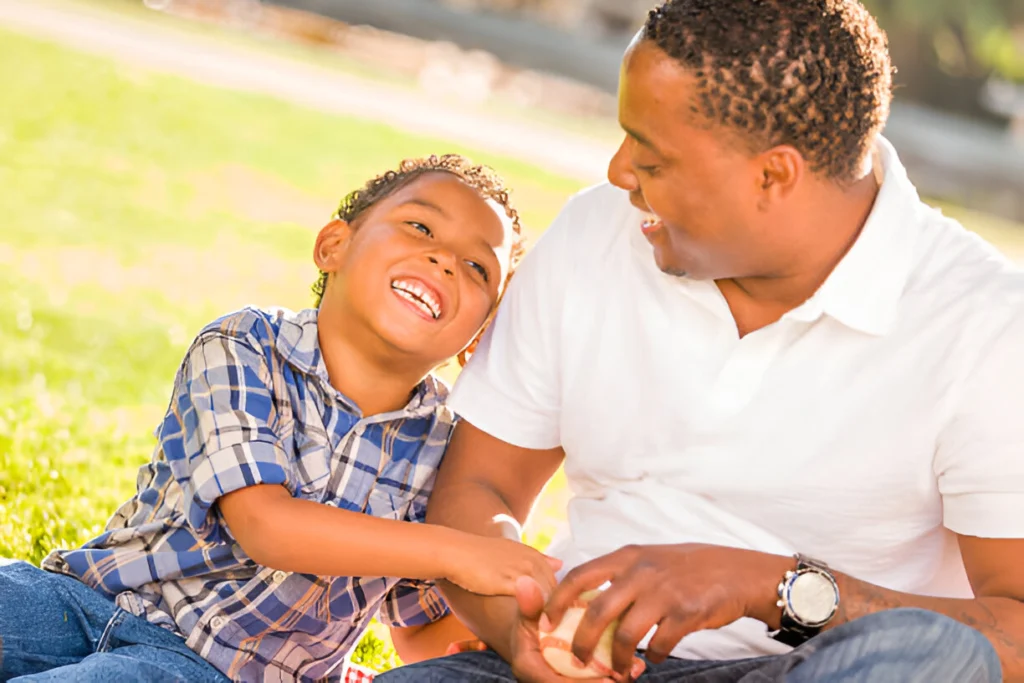
Effective discipline is not about punishment or control. It’s about guiding and teaching your child. Positive discipline techniques help build your child’s self-esteem, responsibility, and decision-making skills. They include natural and logical consequences, as well as positive timeouts.
Natural and Logical Consequences
Natural consequences let your child feel the effects of their choices. For example, forgetting their jacket might make them feel cold outside. Logical consequences are directly related to the misbehavior, like losing screen time for not doing chores10. These methods teach your child, not just force obedience.
Positive Timeouts
Positive timeouts let your child calm down and regroup, not as punishment11. It’s a chance for them to reflect on their actions and come back with control. This helps build self-regulation skills and keeps the parent-child bond strong.
Effective positive discipline is all about tailoring your approach to your child’s needs and the situation12. By using these techniques, you can teach your child self-discipline, responsibility, and problem-solving. This way, you also keep their self-esteem and the bond between you strong.
Stages of Positive Discipline
As children grow, the discipline methods used should change. Positive Discipline offers specific techniques for each age group. This ensures discipline that promotes respect and responsibility.
Birth to 2 Years
In the infant and toddler years, focus on a predictable routine and redirecting behavior. Avoid overstimulation. Positive timeouts should help children learn from mistakes, not punish them13. Timeouts should last no more than one minute for each year of the child’s life13.
2 to 6 Years
Children aged 2 to 6 learn by exploring and asking questions13. Positive timeouts, praising good behavior, and using natural consequences are key. Parents should treat children with respect and involve them in decisions14. Positive discipline focuses on teaching responsibility through natural consequences, not punishment14.
6 to 12 Years
Children aged 6 to 12 can follow rules, accept responsibility, and make decisions13. Discipline for this age involves problem-solving, brief explanations, and actions to reinforce rules. Non-negotiable discipline sets consequences in advance15. Discipline should be private to maintain respect, especially for older children15.
| Age Group | Positive Discipline Techniques |
|---|---|
| Birth to 2 Years |
|
| 2 to 6 Years |
|
| 6 to 12 Years |
|
The Thrive online parenting program offers four modules for different age groups. It provides detailed guidance on Positive Discipline techniques13.
Calm discipline is emphasized for effective positive discipline. Parents should wait until they are calm before addressing misbehavior15.
By adjusting discipline strategies to the child’s age and development, parents can guide their children well. This promotes responsible behavior and builds strong, positive relationships14.
Disciplining in Public
Teaching children to behave in public can be tough for parents. It’s important to stay calm and not embarrass your child. This helps everyone feel better11. Using words or actions to guide them can work well in public11.
Keeping your cool is key when your child misbehaves16. Only discipline them when their actions are harmful, disturb others, or are not right16. Setting clear rules before going out helps them know what’s expected16.
- Speak firmly but kindly when correcting your child16.
- Use consequences that make sense, so they see how their actions affect others16.
- Give your child choices to teach them to take responsibility16.
Knowing what makes your child upset can help prevent problems16. Focus on big issues, not every little thing. Distract them when they start to misbehave16. Being consistent is important, and having a plan helps you handle situations well16.
Showing good behavior and praising your child in public can really help16. Never use physical punishment in public, as it’s very harmful16.
Using these methods, you can discipline your child in public without losing your cool or embarrassing them1116. The goal is to teach them right from wrong in different places16.
Responding to Problem Behavior
When dealing with problem behaviors in children, it’s crucial to first identify the specific behaviors that need to be addressed, as well as the potential triggers that may be contributing to the misbehavior17. By understanding the root causes of the issue, parents and caregivers can develop more targeted and effective discipline strategies17.
Identifying Behaviors and Triggers
Tantrums, acting out, and other emotional outbursts are often a normal and healthy part of childhood development17. However, children who struggle with these behaviors may lack important skills, such as impulse control, emotional self-regulation, problem-solving, and effective communication17. It’s crucial to identify the specific behaviors that need to be addressed, as well as any potential triggers that may be contributing to the misbehavior.
Effective Consequences
When it comes to modifying problem behaviors, the use of effective consequences is key. Consequences should be related to the misbehavior, respectful, and reasonable for the child’s age18. Avoiding consequences that are ineffective, such as giving in to a child’s demands or harsh punishments, is also important17. Instead, establishing clear and consistent strategies with logical consequences, such as time-outs for negative behaviors and rewards for positive behaviors, can be highly beneficial in shaping a child’s conduct1718.
By taking a proactive and thoughtful approach to responding to problem behaviors, parents and caregivers can help children develop the necessary skills to regulate their emotions and make better choices. Responsive Classroom practices can be a valuable resource in this process, providing a framework for creating a positive and supportive environment for children to learn and grow.
Environmental and Situational Factors
As a parent, it’s key to know that environmental factors and situational factors affect your child’s behavior. Things like hunger, fatigue, anxiety, and distractions make it tough for them to control their feelings and actions19.
To help your child succeed, try to adjust the environment. This means offering healthy snacks, making a quiet area for work, and taking regular breaks19.
Managing Distractions and Emotional States
It’s also important to watch your child’s emotional state. Using positive timeouts can help manage their feelings. It gives them a calm place to take a break and calm down19.
By understanding and tackling these environmental and situational factors, you can support your child in learning self-control and positive ways to handle things19.
| Environmental Factors | Situational Factors |
|---|---|
| Hunger | Fatigue |
| Noise | Anxiety |
| Clutter | Distractions |
“By understanding and addressing the environmental and situational factors that may be contributing to your child’s behavior, you can better support them in developing self-control and positive coping mechanisms.”19
As a parent, paying attention to these environmental and situational factors helps create a supportive space. This space encourages your child’s growth in social, emotional, and behavioral areas1920.
Building a Positive Parent-Child Relationship
Having a strong bond with your child is key to good discipline. A trusting and supportive relationship makes your child more likely to listen and respect you21. To strengthen this bond, show love, spend quality time together, and make sure your child feels heard and understood21.
Don’t use discipline as a way to fight with your co-parent21. Work together to present a united front to your child21. This teamwork not only improves your relationship but also makes your child feel secure and respected21.
- Make time for activities your child loves. This builds trust and strengthens your bond.
- Listen to your child’s feelings with empathy. Validate their emotions and create a caring environment.
- Establish clear rules and stick to them. This shows you care about their well-being.
A strong parent-child bond is essential for effective Relationship-Building in Discipline. It lays the groundwork for mutual respect and cooperation, helping you handle discipline challenges21.
As your child grows, your relationship will change. Adjust your approach to meet their changing needs22. A strong, caring bond helps you guide your child through all stages of growth and learning22.
Seeking Professional Support
If you’ve tried many positive discipline methods for weeks without seeing results, it’s time to seek help. Your child’s doctor or the Family Advocacy Program on your military base can offer guidance. They can suggest ways to tackle your child’s behavior issues23. Getting professional help is crucial when your child’s behavior doesn’t improve.
When to Consult Experts
It’s key to seek expert advice when you’ve tried everything else. Look for signs like:
- Your child’s behavior is very disruptive or risky.
- You struggle to stay calm and consistent when disciplining in public.
- Your child’s behavior is affecting their school or social life.
- You’re feeling overwhelmed and unsure about how to help your child.
Remember, asking for help is a sign of strength, not weakness.24 Experts can help you understand your child better and find solutions.
Available Resources
There are many resources for Seeking Professional Support, Consulting Experts, and finding Available Resources:
- Your child’s doctor can give advice and refer you to mental health professionals or parenting coaches.
- The Family Advocacy Program on your military base offers counseling, support groups, and educational materials for military families.
- Local mental health centers, social services, or parenting groups may have affordable services for families.
- Online forums and educational websites can also provide valuable support and information.
You don’t have to face these challenges alone25. By Seeking Professional Support and Consulting Experts when needed, you can find the Available Resources to help your family succeed232425.
Conclusion
Disciplining your child is more than just making them obey. It’s about teaching them to be self-disciplined, respectful, and emotionally mature. By using positive discipline methods, you help your child grow in self-control and self-discipline. This can improve their school performance26 and help them develop empathy and communication skills26.
Building a strong bond with your child is crucial. It helps them grow and thrive. Discipline should focus on teaching structure and routine, which is good for their emotional health26. Positive encouragement and guidance, not harsh punishment, boost their self-esteem and self-worth26.
You’re not alone in this journey. If you need help or support, look for professional advice or effective parenting strategies. With your dedication and the right resources, you can handle disciplining your child in public. This will help your child grow into a well-rounded person.
FAQ
What are the goals of effective discipline?
What are the foundations of effective discipline?
How should discipline techniques be tailored to a child’s developmental stage?
How can physicians promote effective discipline?
What are some positive discipline techniques?
How can parents address problem behaviors in public?
When should parents seek professional support for disciplining their child?
Source Links
- How to Discipline Young Kids Effectively: 4 Steps Every Parent Can Take
- Introduction to “Rewiring Our Perceptions of Discipline… Connections Over Compliance” January 2021
- Disciplining children effectively, with Alan Kazdin, PhD
- Effective discipline for children – PMC
- Q&A: Disciplining a Child in Public – FamilyLife – A Cru Ministry
- The Do’s and Don’ts of Guiding Children
- Interdisciplinary Education and Practice
- Supporting Students with Disabilities and Avoiding the Discriminatory Use of Student Discipline under Section 504 of the Rehabilitation Act of 1973 (PDF)
- 20 Positive Discipline Techniques – Rutgers Youth Sports Research Council
- 5 Tips For Disciplining Your Child In Public – Holly Springs Pediatrics
- Tips for Parents: How to Effectively Use Positive Discipline Strategies
- Positive Discipline Methods for Children | Military OneSource
- Positive Discipline Techniques: Effective Strategies – ABF Creative
- 3 Steps to Positive Discipline – iMOM.com
- How to Discipline Kids In Public Without Embarrassing Yourself — Educator Mom Hub | Supporting Moms of Young Children
- Parents Guide to Problem Behavior
- Responding to Misbehavior
- Voluntary or Forced: Different Effects of Personal and Social Norms on Urban Residents’ Environmental Protection Behavior
- Pro-Environmental Behavior Research: Theoretical Progress and Future Directions
- Co-Parenting and Discipline — National Parents Organization
- Enforcement Actions | Office of the Professions
- Disciplining Public Employees in New York Under Civil Service Law Section 75
- Taking the Pain Out of Disciplining Public Safety Employees – Lexipol
- The importance of disciplining children – National Public School Sarjapur Road

